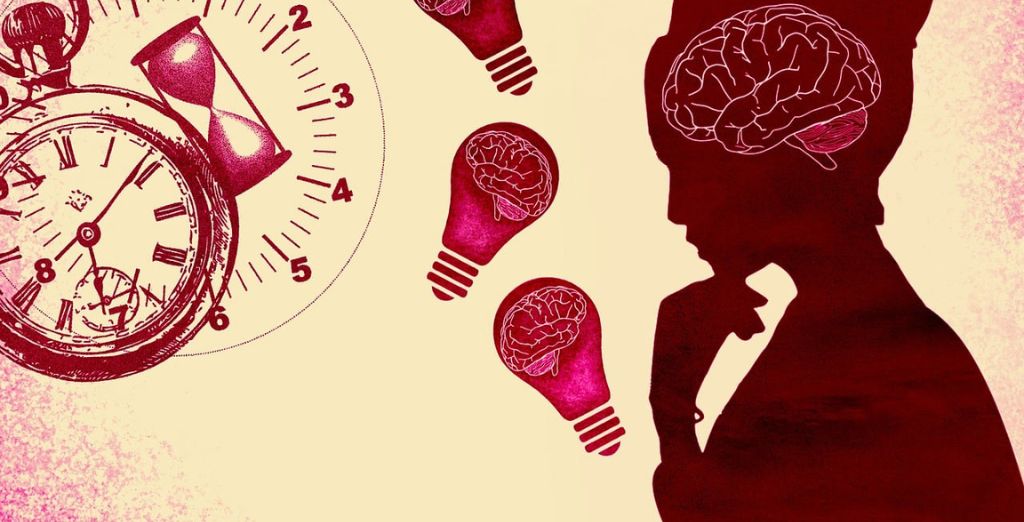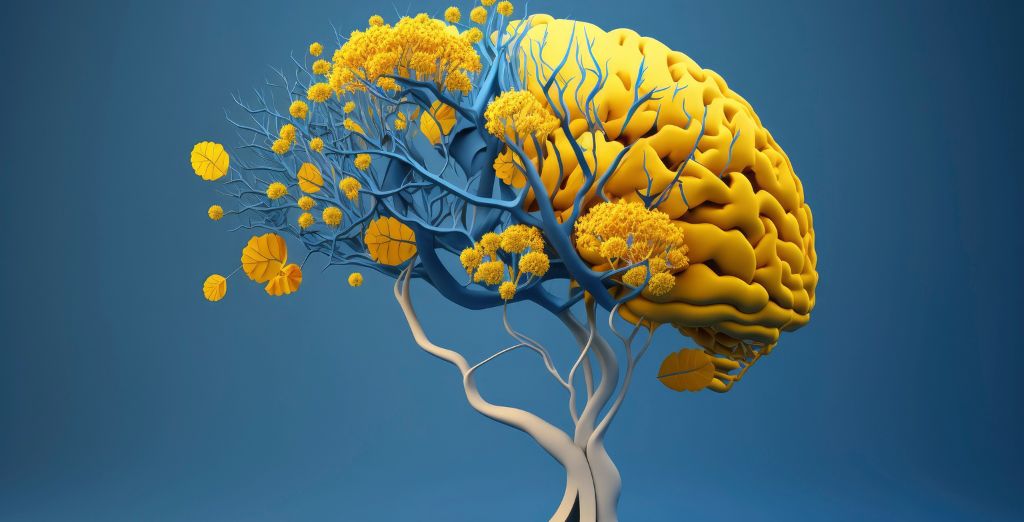The idea of crystals in brain forming in the brain might sound unusual, but it is backed by scientific research. Crystals in brain, such as calcium phosphate or magnetite, can form naturally in brain tissues. These microscopic structures have been studied for their possible roles in biological processes and their impact on health. Scientists have discovered these crystals in various parts of the brain, including the pineal gland and other neural tissues.
Understanding crystals in brain is essential for exploring their possible effects on mental and physical well-being. Their formation is influenced by a mix of biological, chemical, and environmental factors. This phenomenon continues to fascinate researchers, with ongoing studies exploring their purpose and implications.
How Crystals Form in the Brain
Crystals in brain typically form through natural processes involving minerals. The pineal gland is often associated with calcium phosphate crystals, also known as brain sand. This accumulation occurs as part of aging and can be detected in people of all ages.
Magnetite crystals in brain, another type, are found in trace amounts in human brain tissue. These crystals in brain contain iron and are thought to assist with navigation in some animals. In humans, their exact function is not fully understood. Some researchers suggest they may influence brain signals or play a role in how we process magnetic fields.
Factors such as diet, genetics, and environmental exposure to metals may influence the presence of these crystals. Although typically harmless, excessive crystals in brain deposits could be linked to certain health issues.
Crystals in the Pineal Gland
The pineal gland is a small structure in the brain that helps regulate sleep through melatonin production. Studies have shown that this gland can accumulate calcium-based crystals in brain over time. Known as calcification, this process is common and generally harmless.
Some researchers believe calcification might reduce the gland’s ability to function efficiently. This could potentially impact sleep patterns and other biological rhythms. Certain factors, like exposure to fluoride and aging, may accelerate calcification.
Despite these concerns, there is no definitive proof that pineal gland crystals in brain cause significant health problems. However, their presence has sparked curiosity in both scientific and spiritual communities. Some believe these crystals could be connected to heightened consciousness or other mystical experiences.
Are Brain Crystals Harmful?
In most cases, crystals in brain are harmless and form as part of natural biological processes. However, some researchers are investigating whether they could contribute to certain health conditions. Excessive calcification in the brain has been linked to issues like Alzheimer’s disease and other cognitive disorders.
While the presence of crystals doesn’t always indicate a problem, it may serve as a marker for underlying health concerns. For instance, calcium buildup might suggest imbalances in how the body processes minerals.
Scientists are still exploring whether crystals in brain play an active role in disease or are simply a byproduct of other processes. More research is needed to uncover their true significance.
The Role of Crystals in Brain Function
Some studies suggest that crystals in brain, particularly magnetite, could influence brain activity. Magnetite is a magnetic mineral found in small amounts in human brains. It may help conduct electrical signals or interact with external magnetic fields.
This raises intriguing questions about whether magnetite crystals could affect our perception or neurological functions. While this remains a topic of speculation, researchers are delving deeper into the potential links between these crystals in brains and brain health.
On the other hand, calcium crystals in brains in the pineal gland are believed to be more passive. Their accumulation doesn’t seem to serve a direct biological function but instead reflects broader physiological changes.
Can You Prevent Crystal Formation in the Brain?
It’s not entirely possible to prevent the formation of crystals in brain, as some are a natural part of aging. However, adopting a healthy lifestyle may reduce excessive deposits.
A balanced diet rich in antioxidants can help combat oxidative stress, which might contribute to crystals in brain accumulation. Staying hydrated and limiting exposure to heavy metals, such as lead and mercury, could also be beneficial.
Some suggest avoiding excessive fluoride intake, as it may accelerate calcification of the pineal gland. While these measures are not guaranteed to prevent crystal formation, they support overall brain health.

Exploring the Spiritual Connection to Brain Crystals
Beyond their scientific explanations, crystals in brain have sparked interest in spiritual and metaphysical communities. The pineal gland, often called the “third eye,” is central to this discussion. Many believe that crystals in this gland may have a deeper purpose, potentially acting as a gateway to higher consciousness or spiritual awakening.
The presence of calcification in the pineal gland is sometimes associated with blocking spiritual clarity. Those who follow this perspective suggest practices like meditation, detoxification, and mindfulness to “decalcify” the gland. While these claims lack scientific validation, they reflect the human desire to explore connections between physical structures and spiritual experiences.
Crystals in the brain, particularly in the pineal gland, continue to be a topic of fascination for those seeking a balance between science and spirituality. These discussions often emphasize a holistic approach to health and well-being.
Ongoing Research and Future Discoveries
The study of crystals in brain in the brain is still in its early stages. Advanced imaging techniques and biochemical analysis are helping scientists uncover more about these intriguing structures. Understanding their formation, function, and potential health impacts is a growing area of neuroscience.
One avenue of research explores whether external factors, such as magnetic fields or environmental toxins, influence the presence or behavior of brain crystals. Other studies focus on their possible connections to neurological diseases or aging.
As science progresses, we may gain deeper insights into the significance of these crystals. They could offer clues to how the brain works or provide new ways to diagnose and treat conditions.
Supporting Brain Health to Minimize Risks
Even though crystals in the brain are natural, you can take steps to promote overall brain health. Eating a nutrient-rich diet that includes leafy greens, berries, and nuts helps support neural function. Regular exercise, both physical and mental, strengthens the brain and improves circulation.
Reducing stress through mindfulness and relaxation techniques also benefits brain health. Chronic stress can lead to inflammation, which may contribute to calcification or other brain issues. Avoiding environmental toxins, such as heavy metals and pollutants, can further reduce risks associated with excessive crystals in brain buildup.
By prioritizing your brain health, you may help mitigate potential concerns related to crystal formation while enhancing your cognitive and emotional well-being.
Crystals in the Brain and Their Role in Evolution
Some scientists speculate that crystals in the brain, such as magnetite, could have played a role in human evolution. In animals, magnetite is associated with navigation, allowing species like birds and turtles to sense Earth’s magnetic field. This raises the possibility that humans may have retained similar capabilities in ancient times.
Although the evolutionary purpose of these crystals in humans remains unclear, their presence suggests that they could have influenced our ancestors in subtle ways. Some researchers hypothesize that magnetite crystals might interact with the brain’s electromagnetic activity, potentially affecting perception, memory, or intuition.
Further studies into the evolutionary history of these brain structures may reveal whether they once had a more prominent role in human survival or cognitive development. Understanding their past could provide clues about how our brains adapted to changing environments over millennia.
How Crystals in the Brain Are Detected
Detecting crystals in the brain requires advanced medical imaging and analytical techniques. Tools like magnetic resonance imaging (MRI) or computed tomography (CT) scans can reveal calcifications in the pineal gland and other areas. These methods are commonly used in medical settings to assess brain health.
For more detailed analysis, scientists use microscopic imaging to study the size, shape, and composition of crystals. For instance, electron microscopy can identify the specific minerals present in brain tissues.
In some cases, crystals are discovered incidentally during tests for unrelated health conditions. Their presence may prompt further investigation, especially if they are unusually large or widespread. As technology advances, our ability to detect and understand these structures continues to improve.
Debunking Myths About Crystals in the Brain
Despite the scientific evidence surrounding crystals in the brain, misinformation and myths often circulate. One common misconception is that all brain crystals are harmful. In reality, most of these formations are benign and occur naturally as part of aging or normal biological processes.
Another myth suggests that crystal deposits in the pineal gland completely block its function. While calcification can reduce efficiency, it does not entirely disable the gland. Many factors, including overall health and lifestyle, contribute to how the pineal gland operates.
It is also important to approach claims about “decalcifying” the brain with caution. While a healthy diet and lifestyle can support brain health, there is no scientific evidence proving that specific practices can reverse crystal formation entirely.
Separating fact from fiction is crucial to understanding the true nature of crystals in the brain. Staying informed with reliable research helps dispel myths and ensures a balanced perspective on this complex topic.

Conclusion
The formation of crystals in the brain is a fascinating phenomenon that bridges biology, health, and even spirituality. These tiny structures, whether calcium deposits in the pineal gland or magnetite particles in neural tissue, offer a glimpse into the intricate workings of our brains.
While most brain crystals are harmless, their potential links to health conditions or neurological processes make them a valuable subject for research. Exploring their presence helps us uncover new insights into brain function, aging, and even human evolution.
Maintaining a healthy lifestyle, including a balanced diet, regular exercise, and stress management, can support overall brain health and minimize concerns related to crystal accumulation. As science continues to advance, we can look forward to more discoveries about these natural formations and their role in our mental and physical well-being.
FAQs
What are brain crystals made of?
Brain crystals are usually composed of calcium phosphate or magnetite. These minerals naturally occur in brain tissues.
Do crystals in the brain cause health problems?
In most cases, brain crystals are harmless. However, excessive deposits may be linked to certain health conditions, such as cognitive disorders.
Can you remove crystals from the brain?
There is no proven method to remove brain crystals. However, maintaining a healthy lifestyle can help support overall brain health.
















